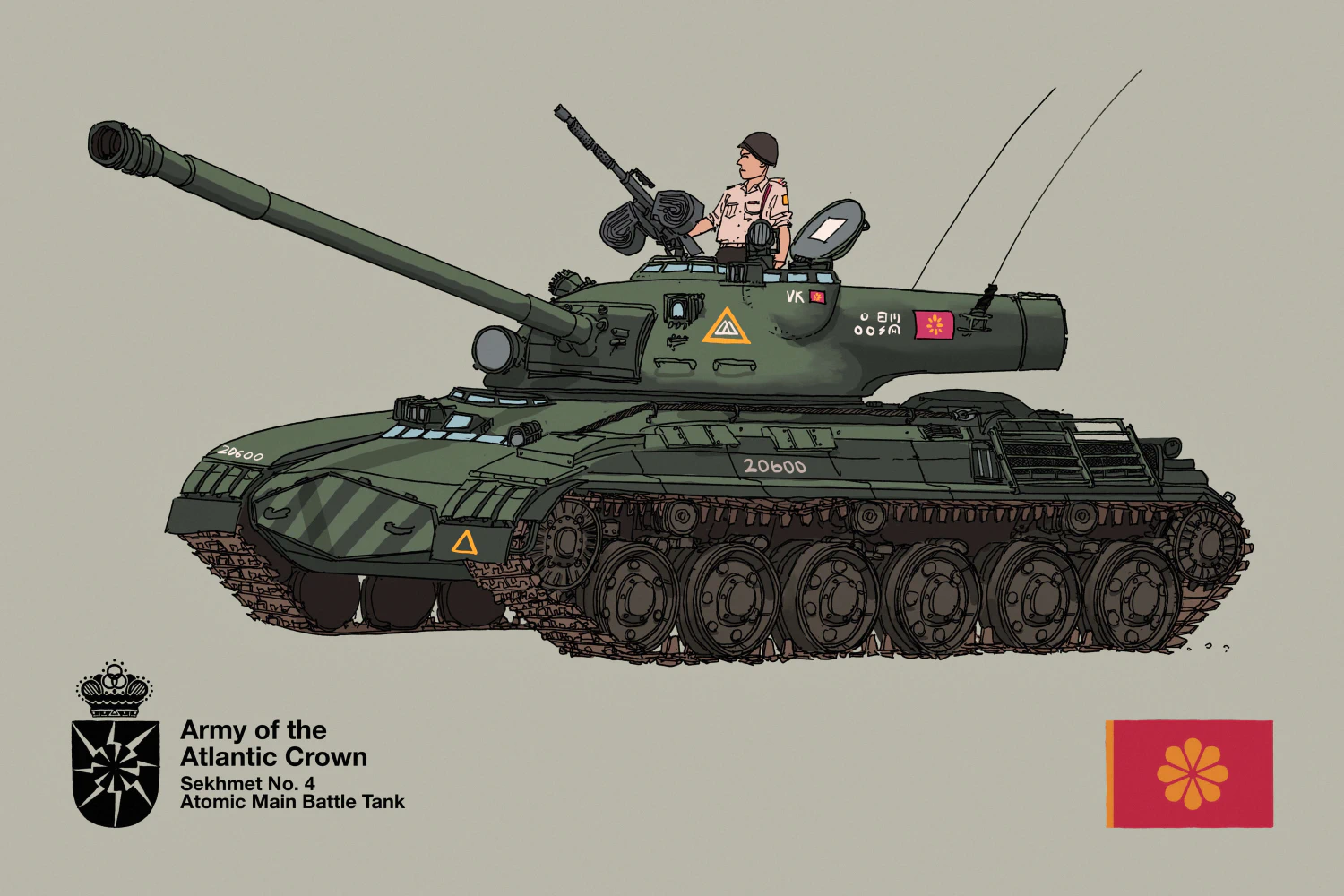NEW Story: Sunday Morning
Atomic Main Battle Tank

This article is not part of Vekllei canon. It may be old, obsolete or just a bit of fun.
The experience of Commonwealth Expeditionary forces in West Africa exposed many weaknesses in existing equipment and strategy. Vehicles designed primarily to defend urban environments after a nuclear war found their weak points ruthlessly targeted in close-quarters asymmetric fighting. If the Commonwealth was truly going to become a great democratic power, with a hand in the affairs of its allies, that meant assembling a force trained for all climates in all theatres of the world.
These lessons became more important as we approached the middle of the 21st Century, after the Africa Wars intensified and the scope of Commonwealth peacekeeping expanded. The Army of the Atlantic Crown, as it is still called, needed to professionalise. The decision was made to separate the existing fighting servicemen – the traditional Army, made up of hundreds of thousands of Atlantic conscripts and dedicated militias and reservists, would remain as a defensive force across the Commonwealth. The new Expeditionary Corps would be an elite, professional Army trained for specialised and extended war-fighting overseas, to meet the moral and political commitments the Commonwealth had made to the 21st Century. Counted in regiments rather than divisions, the Expeditionary Corps is the tip of the spear of Commonwealth warfare, fighting short and surgical wars that leverage the country’s technological and equipment advantage.
Expeditionary Corps units are made up of tactical brigades that are assembled out of strategic regiments for special purposes. The 23rd, 24th and 25th Armoured Regiments are the elite armoured shock units of the Commonwealth’s armed forces, and use its latest tank platform, the No. 4 “Sekhmet.”
Military equipment is numbered consecutively in Vekllei, so the No. 4 MBT is the 4th domestic MBT in service. It is a distinctive tank, with a pronounced bustle that overhangs the domed molten salt fission microreactor and steam turbine engine. The bustle houses the armoured munitions magazine, which feeds 100mm shells into the stabilised cannon. Another distinctive feature is its “panoramic” vision blocks and periscopes, which give the driver and gunner much improved visibility while turned in. This was an evolution from the No. 3 MBT, which in exercises demonstrated the superior accuracy of fighting with hatches open.
The reactor is highly armoured, and additional anti-rocket slat armour is often mounted to further protect the turbine and transmission from shoulder-launched missiles and rockets. There are currently 480 No. 4s in service, which have replaced No. 3s in the Expeditionary Corps. A previous-generation export version is also in service in Yugoslavia and the DR Congo.